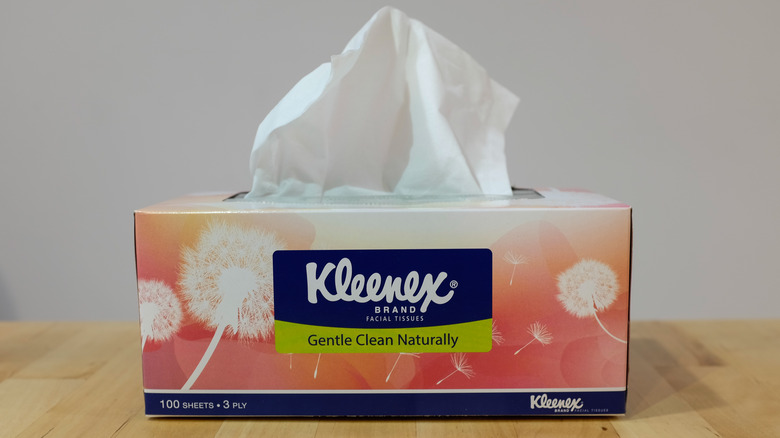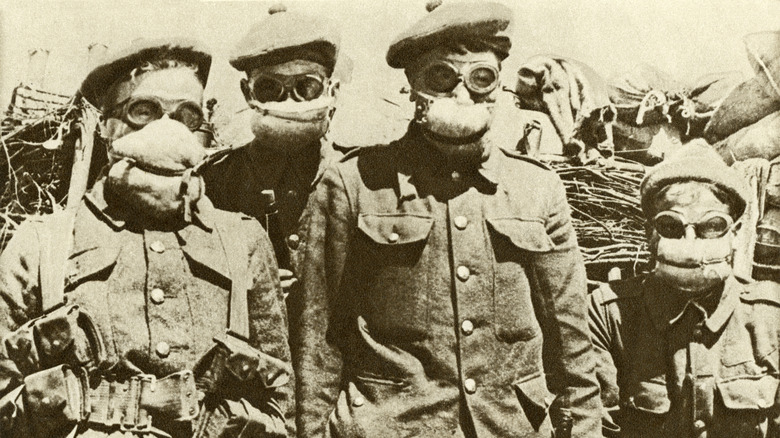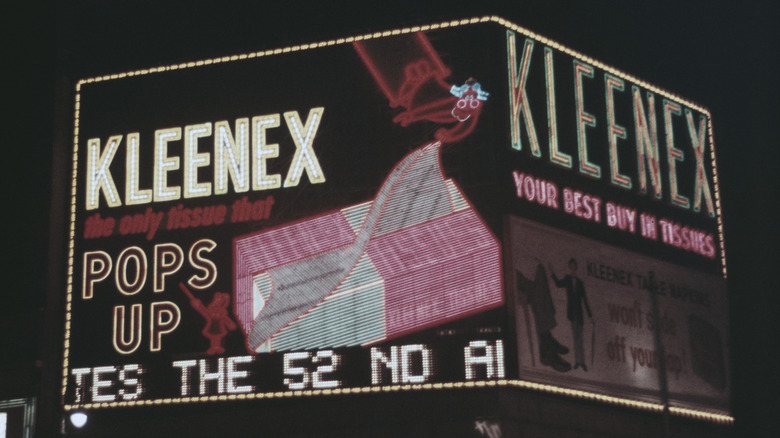The Dark History Behind Kleenex Will Surprise You
Most of us probably grab a Kleenex without giving it a second thought. After all, they are perhaps one of the most common toiletry essentials that can be found just about everywhere, from our bathrooms and kitchens to offices, waiting rooms, and even inside our own purses, cars, or pockets. But grabbing a Kleenex used to be a much more serious business. The ubiquitous household item that we take for granted today once served an important function in World War I.
The paper tissue that we commonly associate with colds and flus today was originally intended to help protect soldiers from chemical warfare, according to War History Online. The invention that would become the Kleenex tissue was first developed by the company Kimberly-Clark, a Wisconsin-based paper company that was founded all the way back in 1872. During the war, Kimberly-Clark decided to pivot their production from paper toward goods that would aid the war effort, and before long, a new, thin, wood cellulose-based product called Cellucotton was born.
Kleenex was used to line gas masks during World War I
Cellucotton was a great boon for the war effort in large part because it had many versatile uses as a substitute for cotton, which was in short supply during the First World War. World War I was the first war in which chemical warfare was widely used, making gas masks and other protective face shields a necessity. Kimberly-Clark's new product provided a strong yet disposable paper filter to line the inside of gas masks and protect against mustard gas, chlorine, and other chemical agents. The new Cellucotton was placed inside the respirator-based gas masks that soldiers were forced to wear on the battlefield, where it helped clear toxins from the air.
But that's not the only use soldiers found for the effective Cellucotton. Because cotton had become so rare, Cellucotton was often deployed in hospitals and on the battlefield as a replacement for cotton bandages. Wartime nurses also soon discovered that the absorbent and disposable tissues could be used as a substitute for menstrual pads, which prompted the brand to eventually start selling a new line of paper produced specifically for women, called Kotex, according to War History Online.
Kleenex began to expand its market after the war
However, once the war ended, the company needed to find some other way to market the paper product, and by 1924, the Kleenex brand had been introduced to Hollywood for use as a makeup remover, according to ThoughtCo. As the decade went on, the tissues' popularity began to spread, and soon people across the country were using the disposable wipes not just to remove cold cream, but also as a disposable handkerchief. Capitalizing on the new use for their paper tissue, the corporation decided to run ads promoting the product as "The handkerchief you can throw away!"
Another war brought Kleenex into the forefront of American culture once again. While paper rationing limited their manufacturing, Kleenex once again became a staple name on the battlefield during World War II, used in field dressings and bandages. By the postwar era of the 1950s, Kleenex was well on its way to becoming America's favorite disposable tissue brand.


